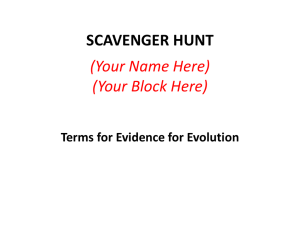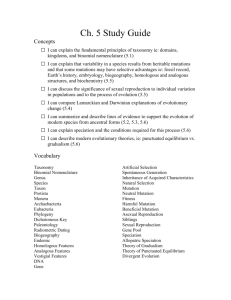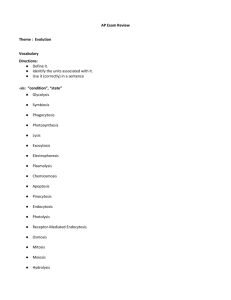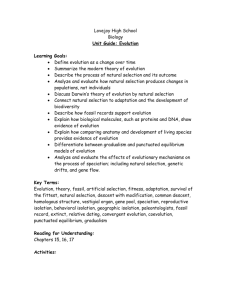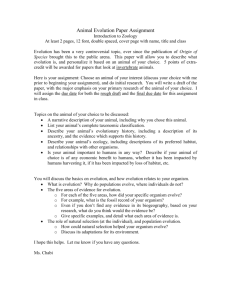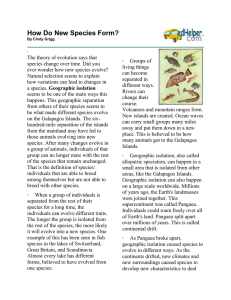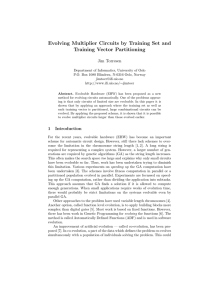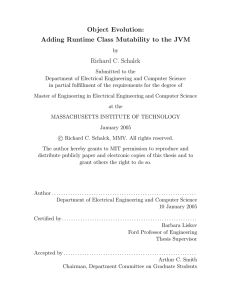Chapter 7: The Theory of Evolution
advertisement
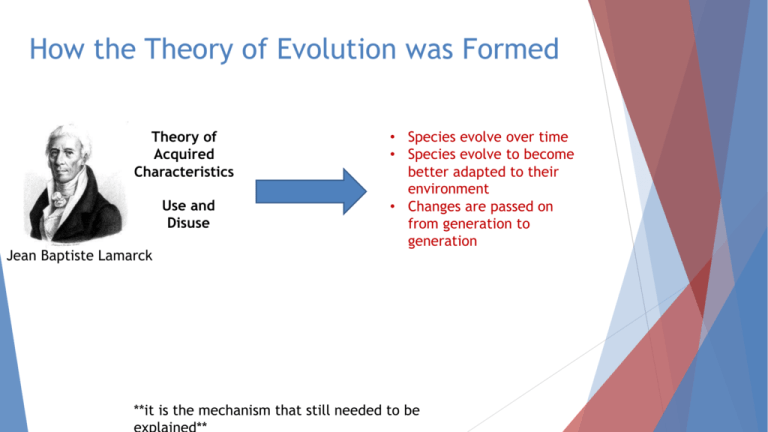
How the Theory of Evolution was Formed Theory of Acquired Characteristics Use and Disuse Jean Baptiste Lamarck • Species evolve over time • Species evolve to become better adapted to their environment • Changes are passed on from generation to generation **it is the mechanism that still needed to be Scientists that Contributed to our present Theory of Evolution Georges Cuvier Catastrophism • Species evolve over time • Species evolve to become better adapted to their environment • Changes are passed down from generation to generation • Species evolved from simple to more complex Scientists that Contributed to our present Theory of Evolution Charles Lyell Uniformitarianism • Species evolve over time • Species evolve to become better adapted to their environment • Changes are passed down from generation to generation • Species evolved from simple to more complex • Geological change is slow and gradual – and therefore so was evolutionary change Speciation Dynamics - Gradualism or Punctuated Equilibrium? The theory of gradualism states that as new species evolve, they appear very similar to the original species and only gradually become more distinctive e.g. Whales and Horses The theory of punctuated equilibrium suggests that the process of evolution is slow, but is occasionally punctuated by periods of rapid change e.g. Hawaiian Honeycreepers This theory explains the lack of fossils of transitional species due to the fact that speciation usually occurs small isolated populations It is now widely accepted that both play a significant role in evolution. Two Patterns of Speciation So Does Evolution Create the Perfect Organism? No, only better organisms as evolution is constrained by history and buffeted by random events. Essentially, every organism on earth is in significant part a sum of accidents. Evidence for Evolution Biogeography Homologous and Analogous features Embryology Vestigial features Competition within Populations What set apart Darwin’s theory from other scientists’ was that it explained how species had evolved, using amassed evidence. 7.3 Darwin’s Voyage on the HMS Beagle Biogeography evidence for evolution Biogeography Geographic patterns of distribution Fossil evidence suggest that ancestral species evolved separately once the supercontinent, Pangaea, separated. Endemic species evolved a lack fear of predation Red colobus monkey (endemic to Zanzibar, Tanzania Homologous Structure/Feature Similar structures found on different species that have entirely different functions. E.g. Same (but modified) bones and relative positions Embryology The embryos of all vertebrates, including humans, chickens, and fish, share a similar pattern in development Provides evidence of evolutionary relationships between species Analogous Structure/ Feature Structures in different species with the same appearance, structure, or function but have evolved separately, thus do not share a common ancestor. E.g. wings of insects and birds used for flying E.g. fins of fish and flippers of whales used for swimming Vestigial Features Physical features that exist with no practical function Competition WITHIN Populations A limiting factor to survival is always FOOD SUPPLY All species produce more offspring than can survive to reproduction This results in a competition for resources, especially when the number of individuals exceeds the amount that can be supported by the habitat. Modern Evidences of Evolution Pseudogenes Homologous Genes Plate tectonics Paleontology How does evolution occur? Evolution of a Species Core principle: Beneficial Neutral Mutations Harmful Genetic Variation in a Population Selection Pressure • • • • Natural Disaster Mate Selection Climate Change Artificial Selection How might it be possible for a neutral mutation to play an important role in the evolution of a species?
